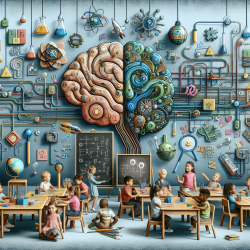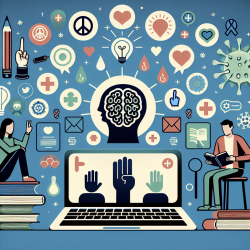Introduction
The field of educational technology is rapidly evolving, with research continually uncovering new ways to enhance learning outcomes. A recent study titled Retooling Computational Techniques for EEG-Based Neurocognitive Modeling of Children's Data, Validity and Prospects for Learning and Education explores innovative approaches to understanding and improving children's learning processes through EEG-based neurocognitive modeling. This blog delves into the study's findings and discusses how practitioners can apply these insights to enhance educational practices.
Understanding EEG-Based Neurocognitive Modeling
Electroencephalography (EEG) is a powerful tool that measures electrical activity in the brain, offering insights into cognitive processes. The study in question utilized EEG data to construct neurocognitive models of children's brain activity during tasks involving visual selective attention and word comprehension. By employing the Adaptive Control of Thought-Rational (ACT-R) cognitive architecture, researchers were able to simulate neural processes with remarkable accuracy, accounting for over 75% of variations in electrical potential measurements.
Key Findings and Implications
The study demonstrated that EEG-based neurocognitive modeling could effectively map cognitive functions and processes, providing a detailed understanding of how children process information. This modeling approach offers several practical implications for education:
- Personalized Learning: By understanding individual cognitive patterns, educators can tailor learning experiences to match each child's unique needs, enhancing engagement and comprehension.
- Inclusive Education: Neurocognitive models can help identify specific learning challenges, allowing for targeted interventions that support children with special needs.
- Educational Neurofeedback: Real-time feedback on brain activity can be used to train children to optimize their cognitive states for learning, similar to techniques used in sports psychology.
Practical Applications for Practitioners
Practitioners in education and speech-language pathology can leverage these findings in several ways:
- Implementing EEG-Based Tools: Incorporate EEG-based assessments to gain insights into students' cognitive processes and tailor interventions accordingly.
- Collaboration with Researchers: Engage with cognitive scientists to develop and refine neurocognitive models that can be integrated into educational practices.
- Professional Development: Stay informed about the latest research in neurocognitive modeling and EEG technology to enhance your practice and improve student outcomes.
Encouraging Further Research
While the study provides a solid foundation for EEG-based educational applications, further research is needed to refine these models and explore their full potential. Practitioners are encouraged to collaborate with researchers to advance this field, ensuring that educational technologies are both effective and accessible.
Conclusion
The integration of EEG-based neurocognitive modeling into educational practices holds great promise for enhancing learning outcomes. By embracing these innovative approaches, educators and practitioners can create more personalized, inclusive, and effective learning environments for children.
To read the original research paper, please follow this link: Retooling Computational Techniques for EEG-Based Neurocognitive Modeling of Children's Data, Validity and Prospects for Learning and Education.










